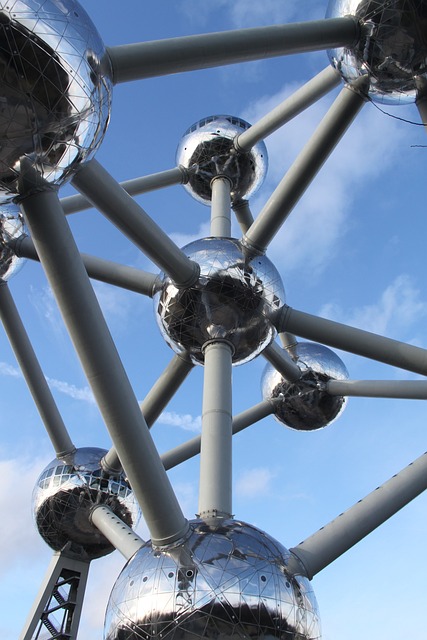Professional utility potholing services leverage advanced techniques like vacuum and hydro excavation to offer non-destructive solutions for precise utility location and line exposure. These methods minimize damage to underground infrastructure, ensuring safe potholing services, especially in urban areas with high risks of hitting critical utilities. By accurately mapping utility lines before excavation, these techniques streamline projects, reduce costs, and minimize disruptions in bustling metropolis environments, enhancing safety for construction crews and reducing service interruptions.
In today’s digital era, ensuring safety during construction projects involves meticulous planning and precise utility identification. This comprehensive guide delves into the critical role of utility potholing services as the foundation for maintaining critical infrastructure. We explore professional execution and advanced techniques like vacuum excavation potholing and hydro excavation potholing to achieve pinpoint accuracy. By prioritizing safe potholing services and adopting non-destructive potholing practices, we can protect subsurface utilities, ensuring long-lasting and secure construction projects.
Understanding Utility Potholing Services: The Foundation of Safety
Utility Potholing Services form the cornerstone of safety in infrastructure management. This non-destructive method, often employing vacuum excavation potholing or hydro excavation potholing, allows for precise utility location and exposure without damaging buried lines. Professional utility potholing teams utilize advanced equipment to create a small hole, using pressurized water and a powerful vacuum to expose underground utilities such as gas, electric, phone, and water lines. This meticulous process ensures safe potholing services, minimizing risks associated with traditional excavation methods.
By employing professional utility potholing, organizations can avoid costly mistakes and potential safety hazards caused by accidental line exposure. Precise utility identification through hydro excavation potholing provides a clear view of the subsurface landscape, enabling accurate mapping and planning for future projects. This approach not only facilitates efficient maintenance but also safeguards workers and the public from unexpected utility line disruptions.
Professional Execution: Ensuring Accurate and Safe Potholing
In the realm of ensuring safety through precise utility identification, professional execution of utility potholing services stands as a cornerstone practice. This specialized technique, often employing vacuum excavation potholing or hydro excavation potholing, allows for safe and non-destructive access to subsurface utility lines. By accurately locating and exposing these lines via advanced technology, such as precise utility location methods, professionals can mitigate the risk of damage to critical infrastructure during construction or maintenance projects.
Professional utility potholing involves skilled technicians who utilize state-of-the-art equipment to create a safe space around buried utilities. This meticulous process prevents costly mistakes and potential hazards associated with striking underground lines. By employing these advanced techniques, such as vacuum excavation, professionals can quickly and accurately expose utility lines, enabling efficient project completion while safeguarding essential services.
Advanced Techniques: Vacuum Excavation and Hydro Excavation for Precision
In today’s digital era, ensuring safety during construction and utility maintenance has become paramount. Advanced techniques like vacuum excavation and hydro excavation are revolutionizing the way we approach utility potholing services. These non-destructive methods allow for precise utility location and utility line exposure, minimizing damage to underground infrastructure. By employing vacuum excavation potholing and hydro excavation potholing, professionals can accurately identify and map utility lines before any excavation, ensuring safe potholing services.
This precision is especially crucial in urban areas where the risk of hitting critical subsurface utilities is high. Unlike traditional methods that rely on guesswork, vacuum excavation uses a powerful vacuum to remove soil while hydro excavation employs high-pressure water jets to expose pipes and cables. These techniques not only enhance safety but also streamline projects, reducing costs and minimizing disruptions to daily operations in bustling metropolis.
Benefits of Non-Destructive Potholing: Protecting Critical Infrastructure Below
Non-Destructive Potholing offers a safe and effective method to expose critical infrastructure beneath our cities without causing damage or disrupting essential services. This meticulous technique, also known as utility potholing services or vacuum excavation potholing, involves using specialized equipment like hydro excavation potholing to create precise openings, revealing the location of underground utility lines with remarkable accuracy. By employing professional utility potholing methods, construction projects can avoid inadvertently damaging vital pipes, cables, and wires, ensuring safe potholing services while minimizing potential risks and costs associated with emergency repairs.
This approach is particularly beneficial for navigating complex urban landscapes where subsurface utility lines are abundant and intricate. Unlike traditional excavation methods, non-destructive potholing allows for precise utility location without the need for extensive digging, thereby preserving the integrity of existing infrastructure. This not only facilitates faster project completion but also fosters a safer working environment for construction crews, reduces the likelihood of service interruptions, and minimizes environmental impact.
In conclusion, precise utility identification through professional utility potholing services is paramount for maintaining safety and protecting critical infrastructure. By employing advanced techniques like vacuum excavation and hydro excavation, we ensure non-destructive potholing that accurately locates and exposes underground utilities, minimizing the risk of damage. This approach promotes safe potholing practices, enhancing overall subsurface utility management and ensuring the well-being of both communities and essential services.
